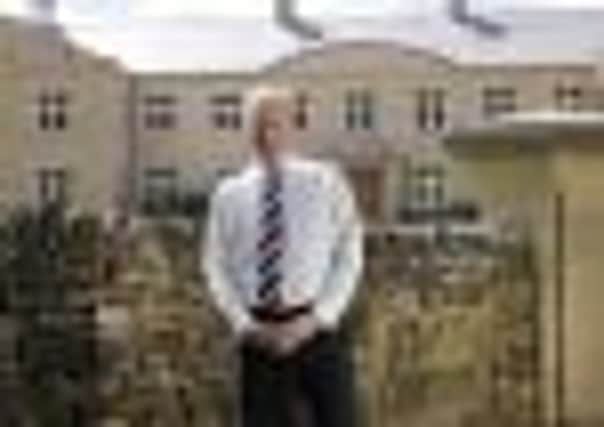Skipton makes a return to booming buy-to-let market


The UK’s fourth largest building society stopped lending to landlords in 2009, but in a sign of renewed confidence in the housing market has re-entered the space.
Skipton chief executive David Cutter said he plans to “significantly” increase mortgage lending this year and has set a target for buy-to-let mortgages to make up 10 per cent of lending this year.
Advertisement
Hide AdAdvertisement
Hide AdThe announcement came as Skipton subsidiary Connells revealed that tenant demand has soared in the northern and central England over the last year, while London and the South have remained broadly flat.
According to the group, tenants are renting for longer periods, due to an increasing number of UK households and continued uncertainty over jobs and the economy.
Kris Brewster, head of products, added: “We believe the buy-to-let sector is a key component of a successful housing market, with private landlords meeting a real social need and providing a vital first stepping stone towards home ownership for tomorrow’s first-time buyers – the oil that keeps the housing market machine moving along.”
In an interview with the Yorkshire Post, Mr Cutter said: “The private renting market remains robust. If you stand back and look at the big picture, owner occupation in the UK peaked at 70 per cent in 2003. There’s been a gradual decline since then.
Advertisement
Hide AdAdvertisement
Hide Ad“The last figures, in February 2011, showed owner occupation at 67 per cent.
“If you look at the private rented market, there were 2m properties in 1999. In 2010, there was 3.4m. It’s a market that’s been growing.”
He said continued restraints in mortgage availability and affordability combined with high asset yields in the low-interest rate environment are driving demand from private tenants.
“A consequence of that environment has been increasing demand for landlords wanting to acquire property,” he added. “What’s been holding it back has been nervousness over the direction of house prices.”
Advertisement
Hide AdAdvertisement
Hide AdHouse prices have fallen by 23 per cent from peak to trough, but bounced back in 2009 and 2010, said Mr Cutter, who added that they have since reduced slightly.
“Although there’s been increasing demand for people wanting to become landlords, people are just being wary in terms of the direction of house prices,” he said. “The big picture is the private rented market has been growing and we don’t see any reason why that growth won’t continue.”
Looking ahead, he said the housing market will be “flat at best” and he “would not be surprised” if it fell by 2-3 per cent this year. House sales through Connells are five per cent down over the last two months compared to the same period last year, he added.
Skipton was keen to emphasise that its new products represent a controlled and low-risk return to buy-to-let lending, governed by prudent lending principles.
Advertisement
Hide AdAdvertisement
Hide AdBuy-to-let loans make up 18 per cent of Skipton’s total mortgage book and perform favourably in comparison with residential mortgages, said Mr Cutter.
On the sales side, Connells, which has nearly 500 estate agency branches nationwide, reported a 7 per cent increase in the number of people looking to sell their homes in January, compared to the same month last year.
Connells expects any significant house price increases “to be in 2012 and beyond”.
A Skipton spokeswoman said: “Though growth may be slow, sales and prices are stabilising and there are some encouraging signs, making it a good time for people to invest in buy-to-let property and for lenders like us to commence offering more innovative solutions such as buy-to-let and first-time buyer loans to help promote the recovery.”
Advertisement
Hide AdAdvertisement
Hide AdA spokesman for the Council of Mortgage Lenders said: “Buy-to-let is one of the few growth areas in the mortgage market, driven by strong demand from tenants. While overall the mortgage market was flat last year, the number of buy-to-let loans increased by 10 per cent, and their value grew by 22 per cent.
“Since 2003, owner-occupation has been in decline in relative terms, and pressure on government funding will bear down on the social rented sector for the foreseeable future. So, private renting is the tenure most likely to grow at this stage. People have to live somewhere, and the buy-to-let sector should continue to grow as landlords respond to tenant demand.”
Division returns to profit
The Skipton Building Society Group’s mortgage and savings division has returned to profit after two years of heavy losses, chief executive David Cutter confirmed.
The division went back into the black at the end of last year despite sustaining an overall loss of £7m during 2010.
Advertisement
Hide AdAdvertisement
Hide AdThis loss, however, was a substantial improvement on the division’s £33m loss in 2009.
Group pre-tax profits were up 94 per cent to £35m in 2010 as the diversified nature of the group helped it maintain independence through turbulent times for the sector.
It increased its core tier one capital ratio – a key measure of financial strength – to 11.1 per cent.